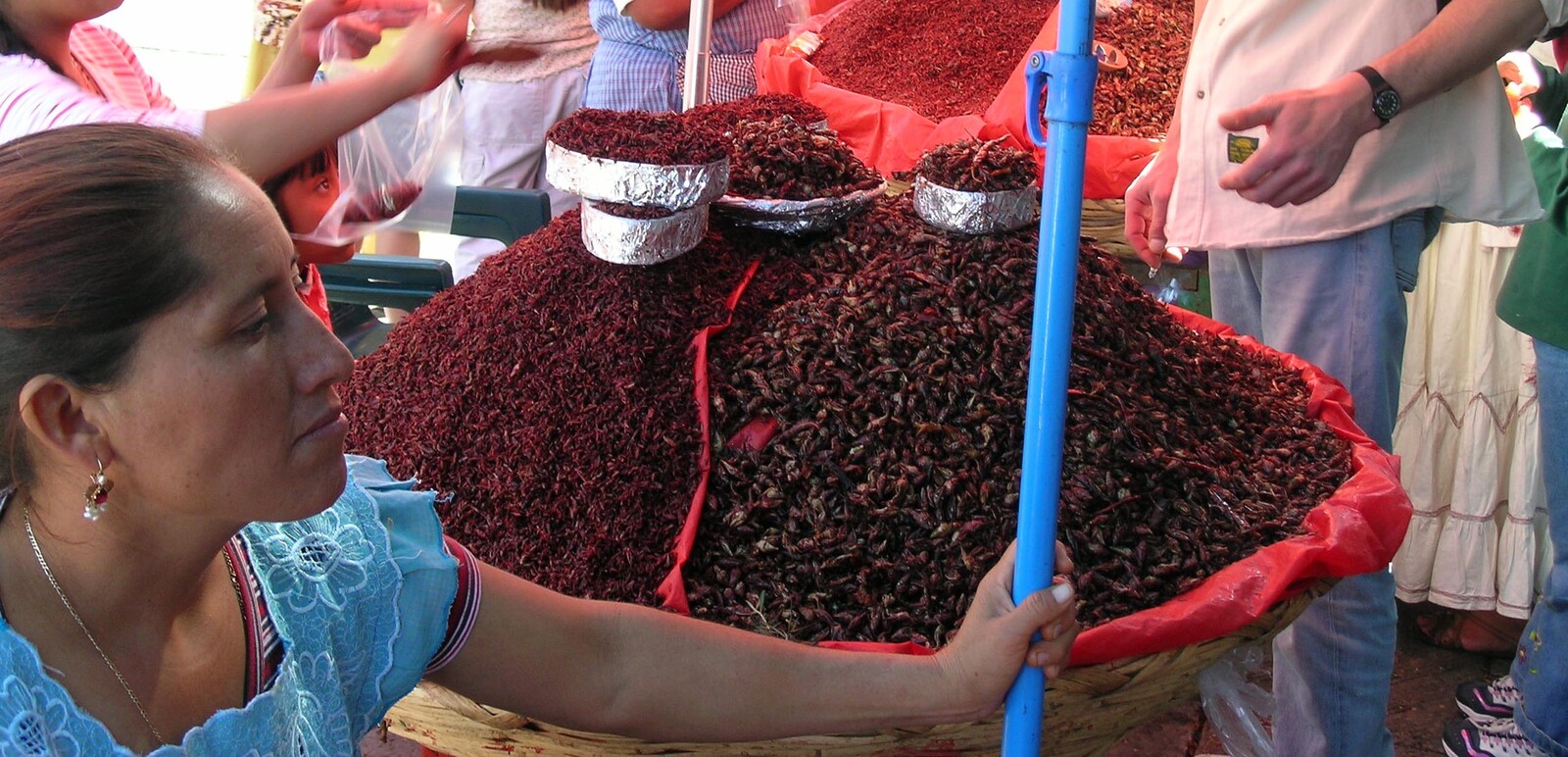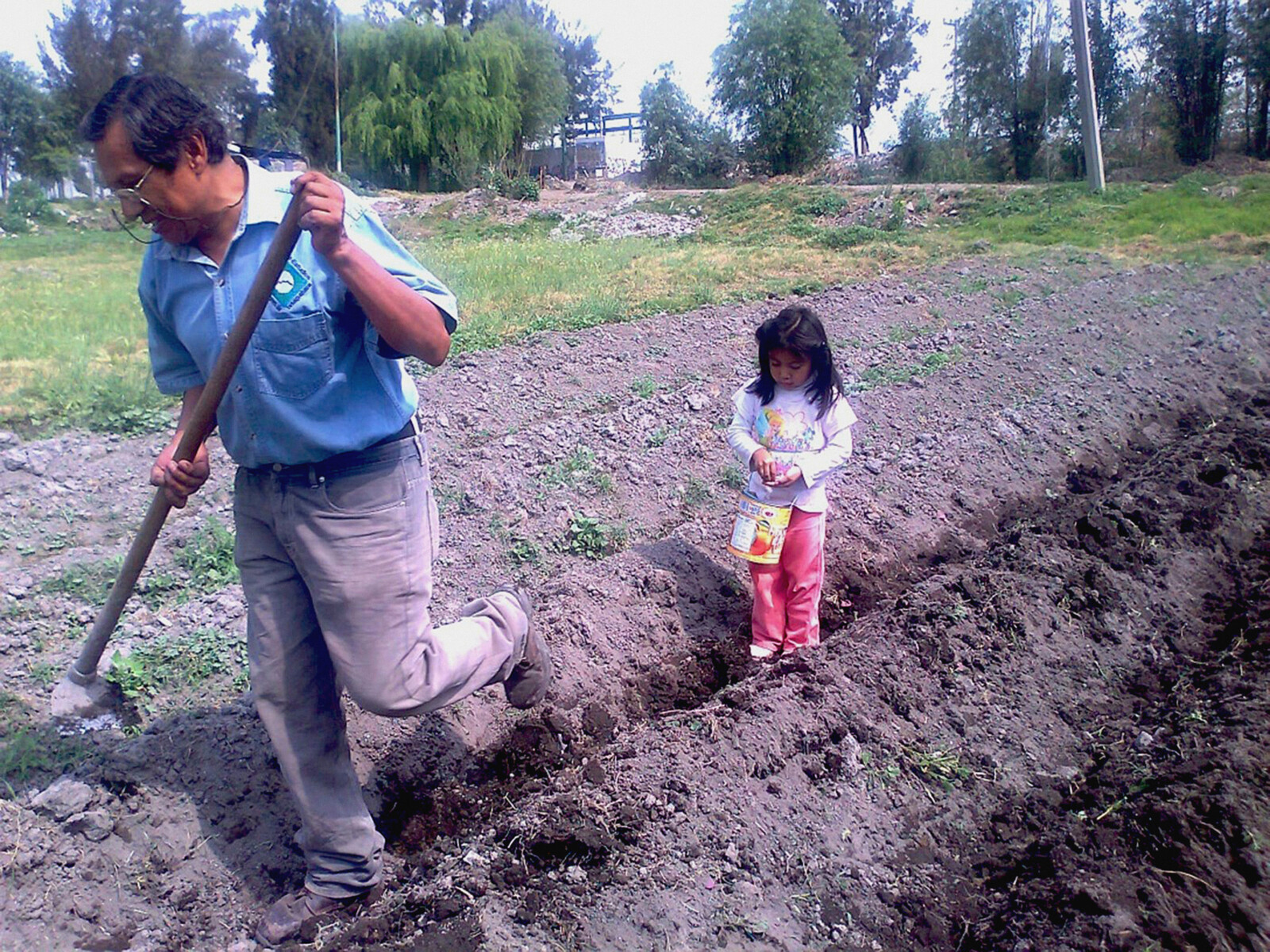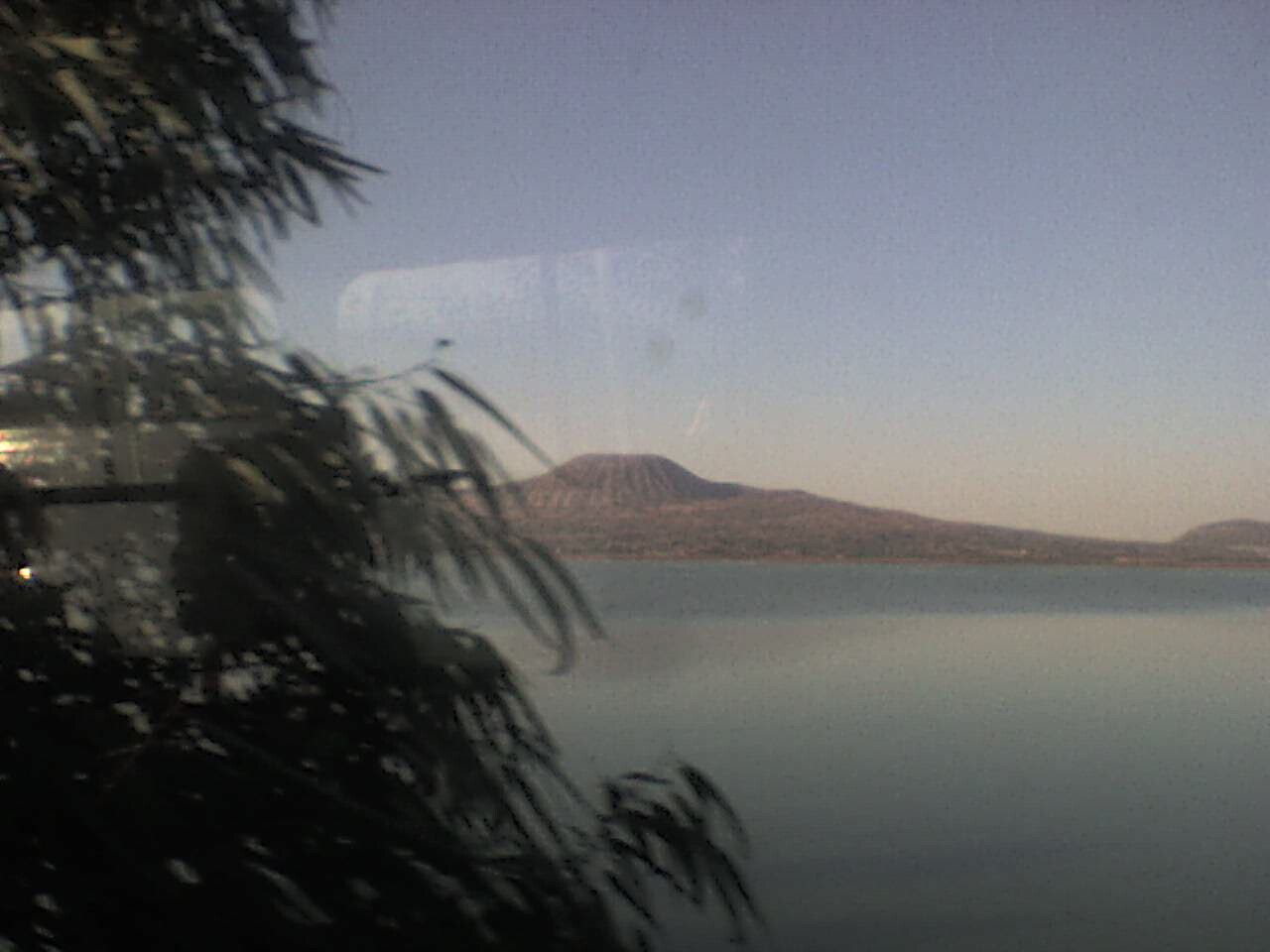At the end of the nineteenth century, business owner and rancher Íñigo Noriega Laso ordered Lake Chalco, a ten-thousand-hectare lake in the Valley of Mexico, to be drained. In the Chalco Valley, the lake was part of the Basin of Mexico lake system, an area home to many Mesoamerican settlements dependent on the waterways. The process of draining the lake that Laso began took until the mid-twentieth century to be completed, at which point the land was converted for agricultural use.
The Chalco Valley area became known for its dairy farming and the exceptional quality of its corn, but this changed in the 1970s when the increasing salinity of the soil made agricultural activity unprofitable. At this point the land began to be subdivided and sold to builders for housing purposes. The people who moved to the area in the 1980s came primarily from Mexico City and Nezahualcóyotl City, and they settled near the lower slopes of the Popocatépetl and Iztaccíhuatl volcanoes, just southeast of Mexico City. I was part of this influx of people who had been expelled from the big cities and forced to live in the outskirts. Inhabitants from the neighboring states of Oaxaca, Puebla, Morelos, and Tlaxcala were also arriving. Yet it was not until 1994 that the Valle de Chalco settlement finally acquired the status of a municipality.
Those of us who came from Mexico City or Nezahualcóyotl were completely unaware of ways to obtain food from the land. So it was a pleasant surprise to be connected with agricultural practices through the ejidatarios (people who hold shares in common lands), who had for a long time dedicated themselves to working the fields in the region. The ejidatarios we met came from the ejido—common land—of San Miguel Xico in the Chalco Valley.
By the 1980s a group of neighbors had begun promoting the creation of a Xico community museum. These citizens were looking to participate in the cultural dynamics of the town and its agricultural practices. The town welcomed a proposal brought by Don Onésimo Ventura Martínez, an ejidatario from Xico, seeking to communally farm the land he owned in a way that preserved traditional agricultural techniques. He wanted to develop a communal sense of identity tied to the land, to create a sense of recognition with the soil that provides us with food, to learn to value the food we eat, and to prepare us to defend our land, water, and life.
This is how the sustainable agricultural project of the Valle de Xico Community Museum began to emerge, a project that I have participated in and that has continued until today. According to Onésimo, difficult times were coming not only on a national level, but on the international stage as well. Human activity was changing the environment. The human species’ capacity for survival was being put at risk, and it was important to preserve the agricultural knowledge produced over time by the generations that preceded us. It was also important to preserve the worldview that places human beings on par with nature in order to successfully face threats to all of humanity, including famine and lack of water. Onésimo believed that, when a future social crisis came to pass, people would have to make use of traditional knowledge in order to produce food in any available space: vacant lots, terraces, patios, fields. But when that time came, it was entirely possible that people would have already forgotten how to work and relate to the land.
We took on the task of sowing Onésimo’s land. We included the children in this family activity so that they might gain an education from an early age based on a respect for nature. Under Onésimo’s direction, we plowed the land, planted corn, beans, and squash, and left a separate tract of land for planting radishes. We eagerly awaited the arrival of the rain, and in the meantime we weeded the furrows. Our children welcomed the rain and the sprouting plants with much happiness and rejoicing. We took special care to explain to them the processes that were taking place. They could barely stand it when a natural phenomenon like a hailstorm arrived. They wanted to climb up the slopes and cover the crops to protect them. The most significant lesson we learned was how interested the children were in the various stages of the agricultural cycle.
When harvest time came, the task at hand quickly became a full-on party: with their little hands, the children were the first into the fields to pick the radishes from the ground, to pluck the squash blossoms, carrying them in large bouquets, to snip the tender green and black beans. But best of all was when it came time to harvest the tender ears of corn, to gather a dozen or so to cook and enjoy in the warmth of family. That was the most delicious corn I had ever tasted; there was a sweetness to it that didn’t require a single other ingredient for it to be savored, and yet the addition of chiles, lemon, and mayonnaise made it exquisite. As a group, we gathered all the ears of corn together and hiked up the hillside with the necessary cooking implements in a large saucepan, and we ate up every last ear we prepared. For this activity, guests were permitted, allowing us to put even more people in touch with nature so that they could reflect on how food is produced and how deep a commitment we have to care for the earth.

Vendors selling chapulines in the Oaxaca Market, Mexico, 2004. License: CC BY-SA 2.5.

Products made with grasshoppers, 2022. Courtesy of Archive of Museo Xico.
Vendors selling chapulines in the Oaxaca Market, Mexico, 2004. License: CC BY-SA 2.5.
A unique occurrence came about on the slopes of the Cerro del Xico hill just a few seasons ago, when there was a plague of chapulines. Chapulines are like locusts, only smaller. I don’t know whether their arrival was due to the drastic changes taking place in the area, resulting in the loss of agricultural land as it was gradually taken over by residential developments, or whether it was because ecological changes are affecting the flight patterns of migratory birds like the cattle heron. The heron are the main predators of these insects, and they are now appearing in ever dwindling numbers, perhaps allowing the chapulines to proliferate.
It seemed as though this plague of insects could prove fatal to corn production. But the situation took an unexpectedly favorable turn. The diet of some communities in the state of Oaxaca includes chapulines, which they prepare with salt, lemon, and chiles and use as a side to various dishes. In Xico, the trend of climbing up the slopes of the hill to hunt chapulines for food didn’t take long to spread. A new protein was added to many peoples’ diet, and what first appeared as a calamity ultimately resulted in a new source of food. To this day, foods incorporating insects remain common.

Genaro Amaro and Yoali Yescas planting corn in 2012. Courtesy of Archive of Museo Xico.

A Triqui child from San Juan Copala eating elotes in Oaxaca, Mexico, 2015. Photo: Arturo Pérez/Cuartoscuro.com.
Genaro Amaro and Yoali Yescas planting corn in 2012. Courtesy of Archive of Museo Xico.
Land-Grabbing Attempts by Mining and Real Estate Companies
In 2004, the real estate company Casas ARA, supported by the government of the State of Mexico, came in to lay the first stone of a development on Del Marqués Hill. Thus began the construction of a 3,529-unit residential project, the Casas ARA Housing Unit. The hill is part of a volcano, and the area held arable land as well as an archaeological site. The president of the ejido commission at the time decided to sell the common land to the developers. My colleagues and I at the Valle de Xico Community Museum tried to prevent this construction, but we lacked certain technical information on the importance of the remains buried there that would allow us to stop it.
We received an invitation from the National Institute of Anthropology and History (INAH) to participate in an archeological rescue project in order to determine the important sites and how best to preserve them. We agreed, in the hopes of acquiring the technical knowledge we were lacking in order to put together a defense of the hill. But at the end of these efforts, which were carried out between 2004 and 2006, INAH somehow determined that there were no historically relevant locations, and the land was handed over to the construction company. We lost this area as both a site of heritage and a zone of agricultural production. Furthermore, the volcanic hill was not suitable for housing, and soon, land beneath the houses began to erode and sinkholes emerged.
The region came under threat again ten years later. On July 26, 2014, San Miguel Xico’s ejido commissioner convened the second General Assembly of Ejidatarios. The purpose was to consider a proposal that would allow for the exploitation of common use lands by Minerales de México, a mining company that aimed to extract various materials. If adopted, this proposal risked destroying the Xico Volcano and erasing its historical and natural importance, disowning the cultural heritage of Valle de Chalco, which today is one of the last remaining spaces for agricultural activities in the area.
Fortunately, at that time the members of the community museum were in constant contact with the surrounding towns, with the municipality’s social and educational organizations, and with the Casas ARA. We also held an ongoing dialogue with the University Museum of Contemporary Art (UNAM) in Mexico City regarding an exhibition of photography and sculptures titled “The Return of a Lake” by the Brazilian artist Maria Thereza Alves (first commissioned by Documenta in 2012). The museum planned to include a collection of archaeological objects on loan from the Xico Community Museum, a conversation with the artist, and five roundtables where the ecological and environmental challenges facing the Chalco-Amecameca region would be discussed. We visited surrounding towns, seeking out members of local civic groups and social organizations from Valle de Chalco and inviting them to participate as speakers at these roundtable discussions. At the same time, meetings were being held with residents of the Casas ARA about the problem of subsidence—sinkholes opening up underneath the streets and foundations of their housing units. They were ready and willing to participate in these conversations.
We appointed a Committee to Promote the Defense of the Xico Volcano, which would then represent the citizens in their struggle. Among the first agreements that the committee reached was to prepare statements denouncing the situation and send them to the corresponding government institutions so they might meet our demands. We sent official letters to the Municipal Presidency of Valle de Chalco, to the Coordinating Unit for Social Participation and Transparency of the Secretary of the Environment and Natural Resources (SEMARNAT), to the Secretary of the Environment and Material Resources of the State of Mexico, to the National Water Commission (CONAGUA), to delegates of the State of Mexico, to the Federal Attorney for the Protection of the Environment (PROFEPA), and to the National Institute of Anthropology and History (INAH), among many others.
Similarly, the ejidatarios of San Miguel Xico were carrying out an information campaign explaining to government institutions and officials the importance of conserving the volcanic slopes. They explained their vital importance as an area of agricultural production, as well as the more wide-ranging need to care for the planet in order to be able to feed the world. In the end we managed to get Minerales de México’s exploitative proposal rejected by the Plenary Assembly of the Ejidatarios. The government agencies told us that no requests had been received for the exploitation of said land, and therefore there were no permits being issued that would affect the area around the Xico Volcano. By late October of 2014, it was evident that efforts to exploit the Xico Volcano had been shut down. We had managed to preserve the historical, cultural, and natural heritage of our Valle de Chalco. This is how a community, accompanied by its museum, puts up a fight in defense of water, life, and land.
Category
Subject
Translated from the Spanish by Ezra E. Fitz




